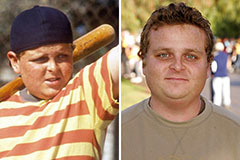Are you interested in know-how about Why Do My Pipes Make Noises?

To identify noisy plumbing, it is essential to determine initial whether the undesirable sounds occur on the system's inlet side-in other words, when water is turned on-or on the drainpipe side. Sounds on the inlet side have actually differed reasons: extreme water pressure, worn valve and faucet parts, poorly attached pumps or various other appliances, incorrectly positioned pipeline fasteners, and also plumbing runs having too many limited bends or other restrictions. Sounds on the drain side usually stem from inadequate area or, just like some inlet side noise, a layout containing limited bends.
Hissing
Hissing sound that happens when a tap is opened somewhat typically signals excessive water pressure. Consult your neighborhood public utility if you believe this trouble; it will be able to inform you the water stress in your area and can mount a pressurereducing valve on the inbound supply of water pipe if needed.
Other Inlet Side Noises
Squeaking, squeaking, damaging, snapping, and touching usually are triggered by the growth or contraction of pipes, generally copper ones providing warm water. The audios happen as the pipes slide against loosened bolts or strike close-by house framework. You can commonly identify the location of the problem if the pipelines are subjected; just adhere to the noise when the pipes are making noise. More than likely you will uncover a loose pipe wall mount or an area where pipes exist so near flooring joists or other mounting items that they clatter against them. Affixing foam pipe insulation around the pipes at the point of call must remedy the trouble. Make sure straps and also hangers are safe and secure as well as offer ample assistance. Where feasible, pipe bolts must be attached to substantial structural aspects such as foundation wall surfaces instead of to mounting; doing so reduces the transmission of resonances from plumbing to surfaces that can intensify as well as move them. If connecting fasteners to framework is unavoidable, cover pipes with insulation or other resilient material where they contact bolts, as well as sandwich completions of new bolts between rubber washing machines when installing them.
Fixing plumbing runs that deal with flow-restricting tight or many bends is a last option that must be undertaken just after consulting a competent plumbing service provider. Unfortunately, this circumstance is rather common in older homes that might not have been developed with interior plumbing or that have seen a number of remodels, particularly by beginners.
Chattering or Shrieking
Extreme chattering or shrilling that occurs when a shutoff or faucet is activated, which typically vanishes when the installation is opened fully, signals loose or malfunctioning inner parts. The option is to change the shutoff or faucet with a new one.
Pumps as well as devices such as washing devices as well as dish washers can move electric motor sound to pipes if they are incorrectly linked. Connect such products to plumbing with plastic or rubber hoses-never inflexible pipe-to isolate them.
Drain Noise
On the drain side of plumbing, the chief goals are to get rid of surfaces that can be struck by falling or rushing water as well as to shield pipelines to contain unavoidable noises.
In brand-new building and construction, bath tubs, shower stalls, toilets, and wallmounted sinks and also containers should be set on or against resilient underlayments to decrease the transmission of noise with them. Water-saving toilets and faucets are less noisy than traditional designs; mount them rather than older kinds even if codes in your location still allow making use of older components.
Drains that do not run up and down to the cellar or that branch right into straight pipeline runs sustained at flooring joists or other framing present particularly troublesome noise problems. Such pipelines are huge sufficient to emit significant resonance; they likewise bring considerable amounts of water, which makes the situation worse. In new construction, define cast-iron dirt pipelines (the huge pipelines that drain bathrooms) if you can afford them. Their enormity consists of much of the noise made by water passing through them. Also, avoid directing drainpipes in walls shared with rooms and also spaces where people collect. Wall surfaces consisting of drainpipes should be soundproofed as was defined previously, utilizing double panels of sound-insulating fiberboard and wallboard. Pipes themselves can be wrapped with unique fiberglass insulation made for the objective; such pipelines have an invulnerable vinyl skin (sometimes having lead). Outcomes are not constantly sufficient.
Thudding
Thudding sound, typically accompanied by shuddering pipelines, when a tap or appliance shutoff is switched off is a condition called water hammer. The noise and also vibration are caused by the resounding wave of stress in the water, which all of a sudden has no area to go. In some cases opening a shutoff that releases water swiftly into an area of piping consisting of a restriction, joint, or tee fitting can produce the same problem.
Water hammer can normally be cured by mounting fittings called air chambers or shock absorbers in the plumbing to which the trouble shutoffs or taps are connected. These tools allow the shock wave produced by the halted circulation of water to dissipate in the air they have, which (unlike water) is compressible.
Older plumbing systems may have brief vertical areas of capped pipe behind wall surfaces on faucet competes the very same function; these can at some point fill with water, minimizing or destroying their performance. The cure is to drain pipes the water system totally by shutting down the main water system valve and also opening all faucets. After that open up the main supply shutoff and also close the faucets one at a time, beginning with the tap nearest the valve as well as finishing with the one farthest away.
Pipe Down! What to Do About Noisy Water Pipes
Banging
Does it sound like someone's hitting your pipes with a hammer every time you run water? The issue could be a phenomenon called water hammer, which happens when a water valve closes suddenly. You'll often hear it when your washing machine stops filling, for example. The momentum and pressure from the water flowing toward the valve create the shockwave that causes the banging noise when the valve closes suddenly. It might not seem like a big deal, but water hammer can cause damage to your pipes, including leaks and joint damage.
One way to ease water hammer is by installing water hammer arrestors. Your plumber can install them near major valves to help cushion the shock of the water when it suddenly stops or changes direction. You might also need to reduce the water pressure coming into your home with the pressure-reducing valve.
Gurgling
Gurgling sounds typically come from drainpipes. This sound happens when the water can't drain properly, usually when there's a clog in the water pipes. Drain clogs often happen due to hair, grease, soap scum or objects that fall down the drain. They can happen suddenly or build up slowly over time.
You can sometimes clear a clogged drainpipe with a plunger to help force the clog through the pipe. A plumbing snake or an auger can also help break up tough clogs. A common plumbing myth is that chemical drain cleaners are safe and effective, but they often don't work and contain harsh chemicals that can hurt you and your plumbing. If you can't remove the clog with a plunger or snake, it's best to call a plumber to help.
Rattling
Water travels through your pipes with lots of pressure, so the pipes are bound to move a little. Pipes should be secured well to keep them from moving too much when water runs through them. If they're not properly fastened or the fasteners come loose, you might hear them rattling when you run water.
Resecuring the pipes can cut down on the rattling noise and prevent damage to the joints of the water pipes. However, many pipes run behind walls where you can't easily access them. A plumber can help determine if loose fasteners are the cause of the rattling and resecure them if necessary.
Humming
If your pipes sound like they're humming, it's likely a water pressure issue. When the water pressure is high, it can cause the water pipes to vibrate and create a humming sound. High water pressure is more common if you have a well for your water, but it can happen with municipal water as well. High water pressure can damage your plumbing and cause leaks.
If you have a well, check the pressure to ensure it's below 55 pounds per square inch. A plumber can test the pressure for you and help adjust the issue if you're not sure how to do it yourself. If you're connected to the municipal water source, your home likely has a pressure-reducing valve near where the water enters your home. You can adjust the screw in the valve to decrease the pressure, but be careful not to lower it too much.
Squeaking
Squeaking or squealing is another common sound you'll hear in your water pipes. This often happens if small components within the plumbing, such as washers or aerators, become loose, dirty or damaged. When this is the cause, the squeaking sound is usually confined to a certain fixture or area of plumbing. Replaced or repairing the part should solve the noise.
If you can hear the squealing sound everywhere in your home, it could be an issue with water pressure. Buildup in the pipes narrows the space for the water, which can cause squealing as the water tries to squeeze through the pipes. Wear and tear on the plumbing system can also cause whistling or squeaking. These situations typically require a professional plumber to diagnose and repair.
https://www.homeserve.com/en-us/blog/home-improvement/water-pipes-making-noise/

Do you like more info about Why Your Water Pipes Are Noisy and How To Shut Them Up? Put feedback down the page. We would be delighted to hear your thinking about this entry. Hoping to see you back again in the near future. In case you enjoyed our blog entry if you please be sure to share it. Thanks for going through it.
Make An Appointment
 Alana "Honey Boo Boo" Thompson Then & Now!
Alana "Honey Boo Boo" Thompson Then & Now! Patrick Renna Then & Now!
Patrick Renna Then & Now! Destiny’s Child Then & Now!
Destiny’s Child Then & Now! Michael Fishman Then & Now!
Michael Fishman Then & Now! Catherine Bach Then & Now!
Catherine Bach Then & Now!